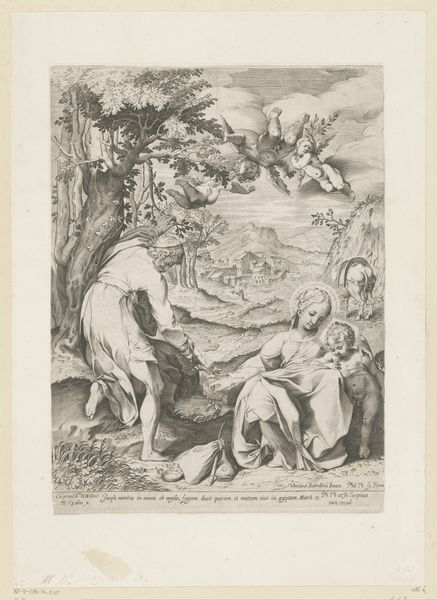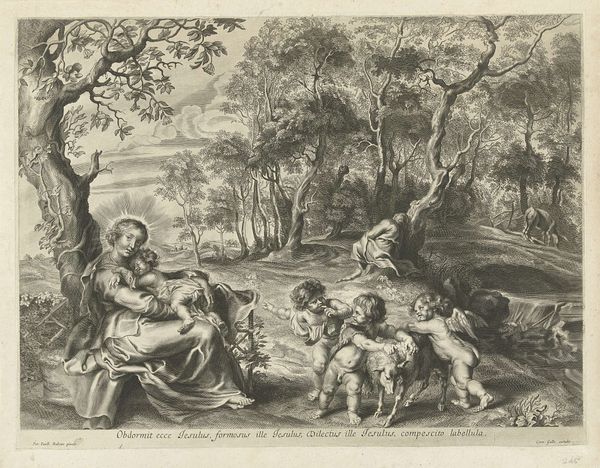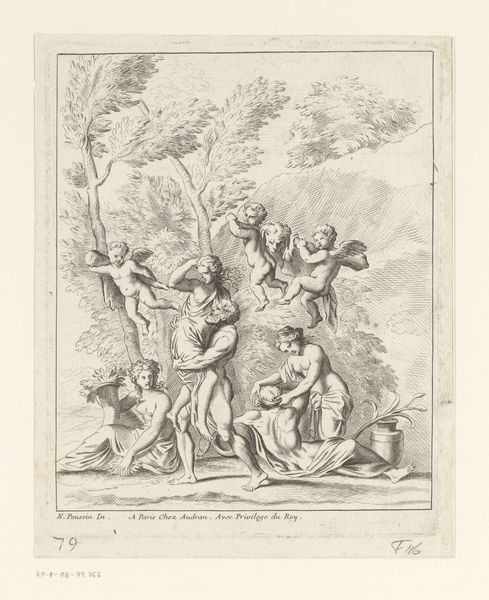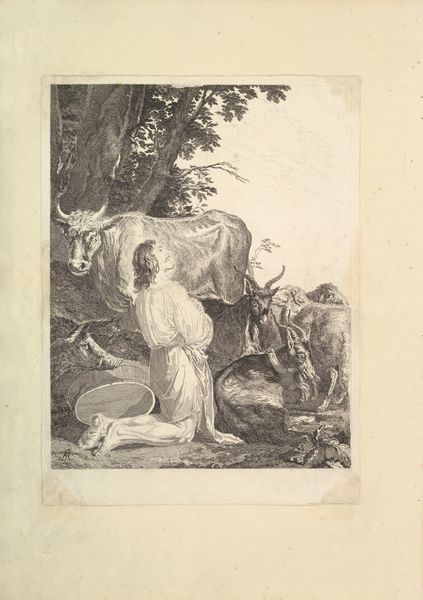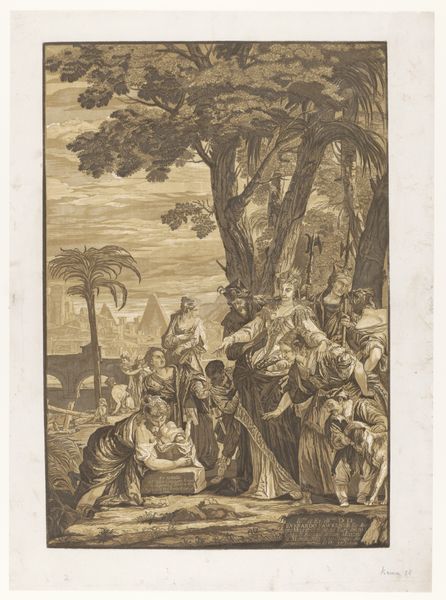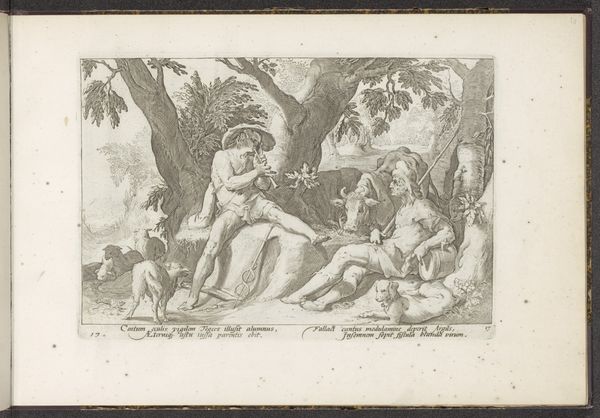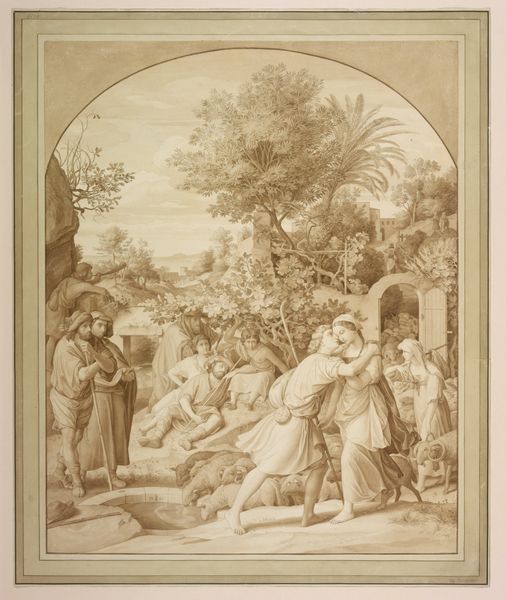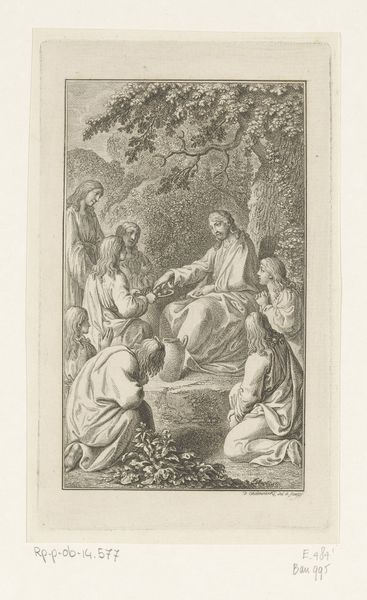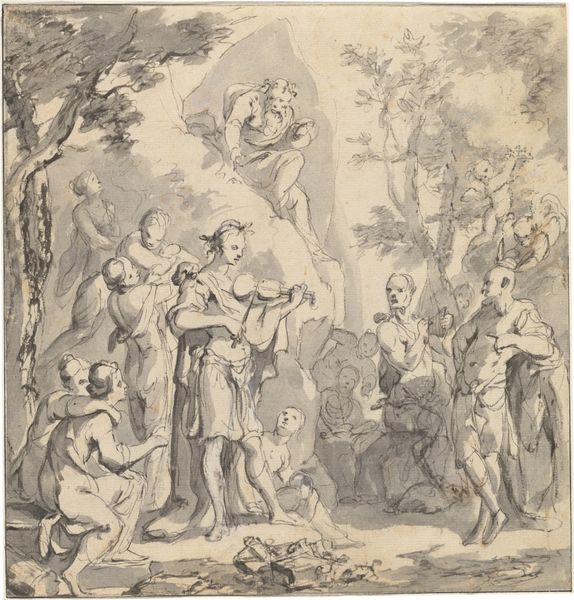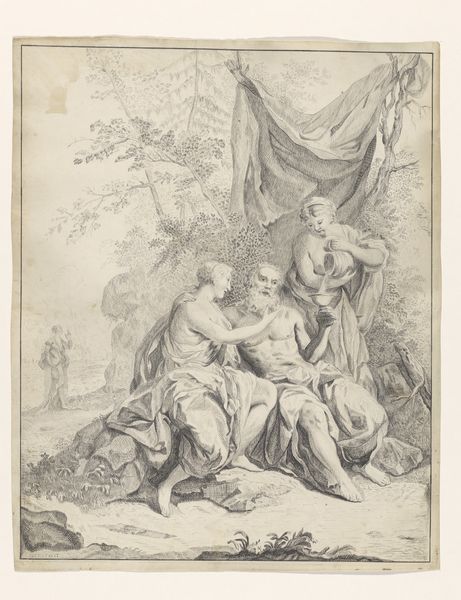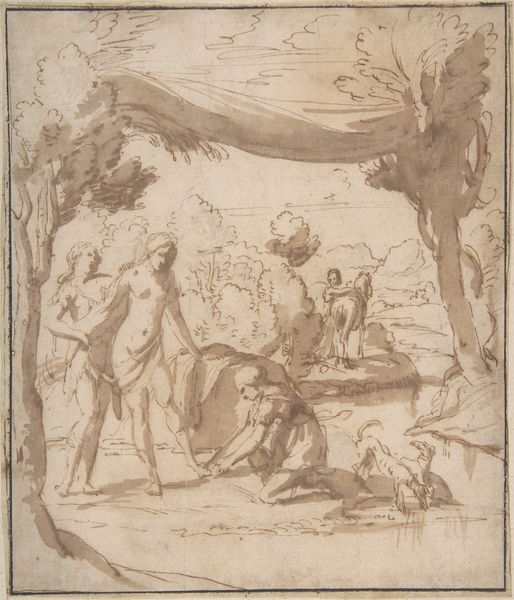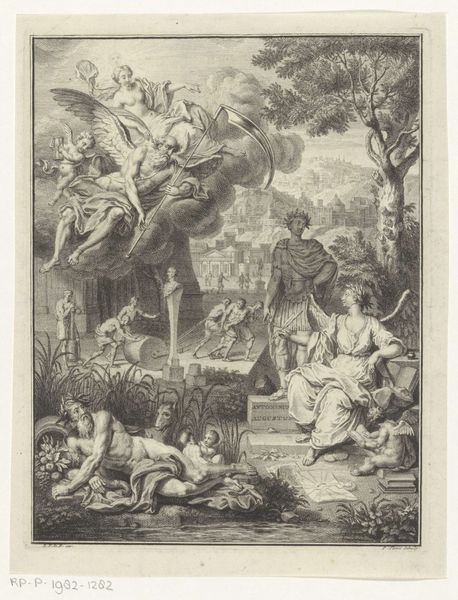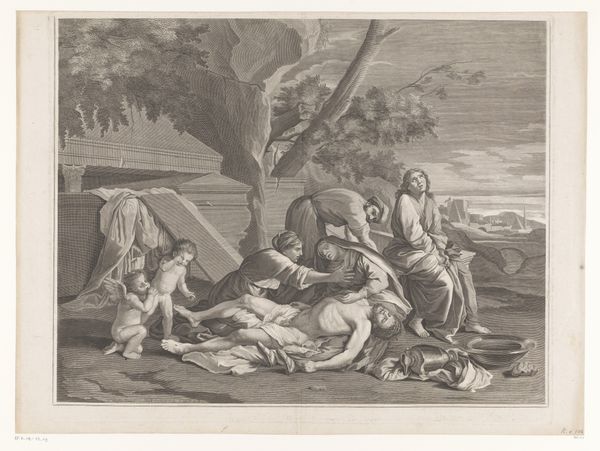
watercolor
#
landscape
#
figuration
#
watercolor
#
genre-painting
#
watercolor
Dimensions: height 240 mm, width 197 mm
Copyright: Rijks Museum: Open Domain
Curator: It’s interesting to look at how the composition mimics classical depictions of an Arcadian landscape—a common theme in art, literature, and music during the 18th and 19th centuries, offering an idealized view of simple rural life. Editor: There’s an incredible lightness here; it's a world of leisure. I’m drawn to the gentle brushstrokes in the trees—how they sway despite being still—and the way the human figures recline on the grass. The translucent quality suggests a kind of dream-like, untouched world. Curator: Exactly. This work, titled *Een gelukkige Arcadische Familie*, which translates to 'A Happy Arcadian Family,' comes to us from the hand of Jurriaan Andriessen. Dating from circa 1752-1819, this watercolour—now housed at the Rijksmuseum—presents us with more than meets the eye upon casual viewing. These Arcadian scenes, popular as they were, often glossed over very real societal inequalities of the time. Editor: Watercolor... considering how delicate the medium is, the depiction of bare flesh almost feels subversive. We're meant to look, and admire—and in a society deeply engaged with craftsmanship and the body as a commodity, such images invite scrutiny. The material process here informs how we see these bodies within an idealized pastoral space. Curator: Precisely. The emphasis is placed not merely on depicting bodies but in celebrating particular bodies, the implication being of status, privilege, and leisurely pursuit—ones markedly different from those who actually engage in such labour in agricultural settings. It is this divergence, that I think challenges the supposed "innocence" of Arcadia, because of how those left out serve to define such communities. Editor: It makes you wonder, doesn’t it, about the socio-economic mechanics at play? What materials underpinned such luxuries? Where were the laborers, craftspeople, farmers, weavers—everyone it would take to produce not just the art, but this lifestyle as well? It challenges what is omitted or made marginal when an exclusive ideal such as “happiness” is displayed. Curator: Definitely something to ponder and dissect further. Thank you for helping me frame it for a new generation. Editor: Always a pleasure. It has me rethinking material luxury and its discontents as well.
Comments
No comments
Be the first to comment and join the conversation on the ultimate creative platform.
